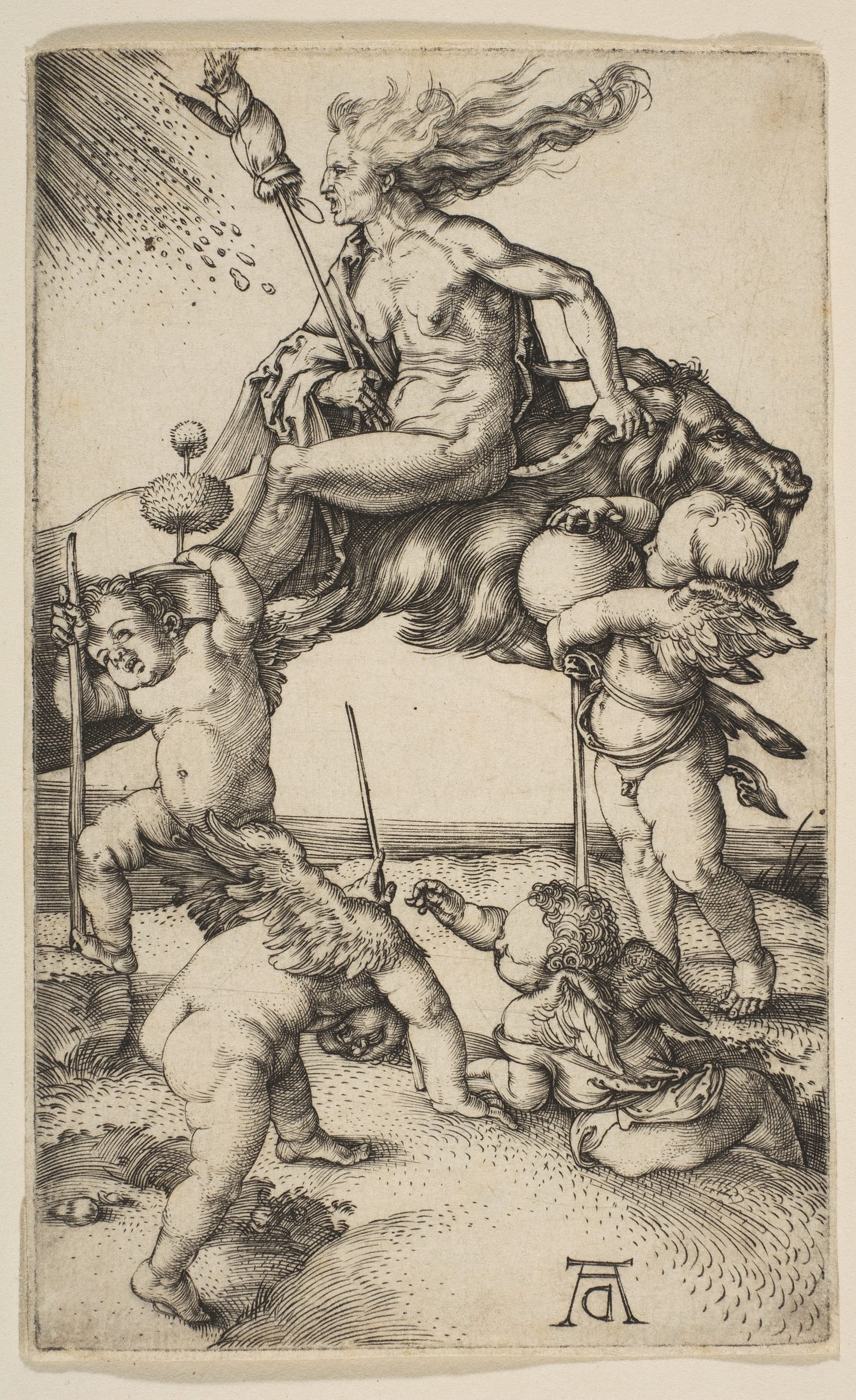Albrecht Dürer Bewitched
Albrecht Dürer's witch engravings seem to be emblematic of the European witch trials. But could they be about something else entirely?

A naked woman, broom in hand, rides backwards on a goat. Her hair flows in the opposite direction of the creature’s fur, suggesting something deeply unnatural. Magic is afoot.
She is surrounded by putti: one carries an alchemist’s pot, one holds a highly-poisonous thornapple plant, and one appears to be passing gas as another tries to grab the magic wand from his hand. It is an image wild and wicked, clearly meant to illustrate the popular perception of witches at the height of the European witch trials… right?
Except this engraving was created in the year 1500 by Albrecht Dürer, and the witch craze wouldn’t begin in earnest until the mid-sixteenth century. Witch trials did exist, but they were scattered events compared to the widespread panic that would engulf the public decades later. When evaluating Dürer’s witch engravings, we have to ask: from whom did he derive his inspirati…


